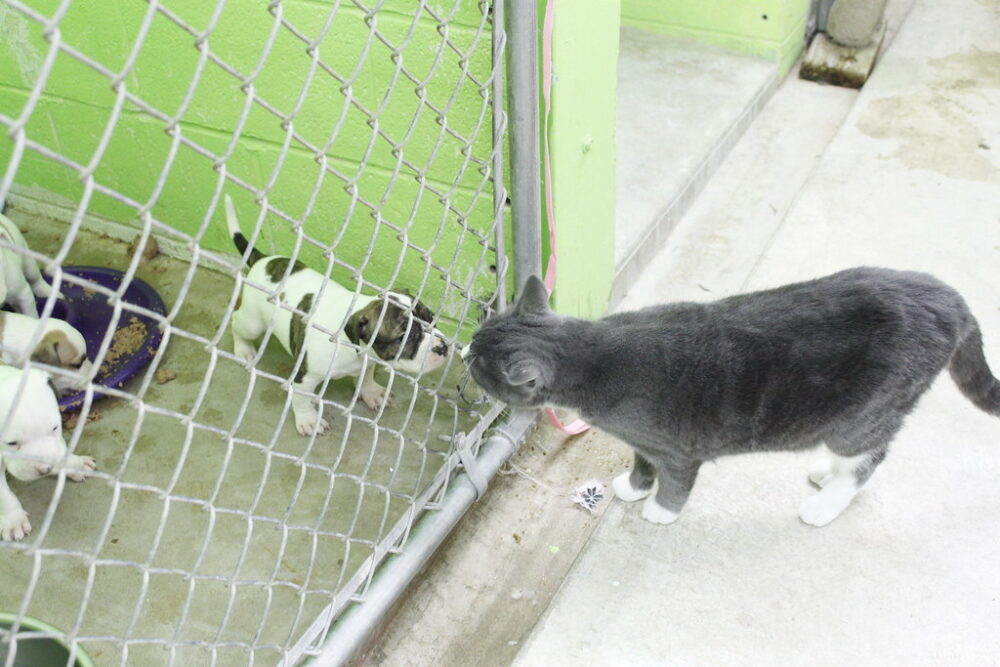Nearby a municipal landfill in Oregon, several witnesses discovered the bodies of eight incapacitated bald eagles. Flightless and convulsing, these animals appeared near death and were retrieved by National Fish and Wildlife Forensics Laboratory staff. One eagle was confirmed dead, while the others were moved for supportive care. What was the cause of this loss of life and illness? The answers could be sought by a specific expert of veterinary medicine: a veterinary forensic pathologist.
Veterinary forensics is used for many circumstances involving animals. With growing awareness of animal cruelty, public pressures for the investigation of animal abuse crimes have increased. Due to these pressures, veterinary forensics is a growing field. In 2016, the National Incident-Based Reporting System used by the FBI created a new category to track violence and abuse against animals in the same way they track homicide. Wildlife crime is also a concern, including animal trading and smuggling, illegal possession, abuse, habitat destruction, and illegal hunting.
A specific forensics expert is needed for animal crime because other scientists who study animal physiology and disease may rarely encounter abuse or crime-related pathology. The first step for this expert is crime scene investigation. In their review of veterinary forensic science, researchers from the University of Florida stress the importance of an in-person analysis of the scene by a forensic veterinarian. These experts are familiar with animal crime and could identify, for example, wash tubs used to clean dogs prior to dogfighting that a law enforcement officer could overlook. At the scene, animals are triaged: victims in critical condition are identified and subsequently sorted by medical condition. Deceased victims and their environment are documented as well, and all relevant physical evidence is collected and preserved.
Following crime scene investigation, scientists examine the bodies of the victims through forensic necropsy, the animal equivalent of a human autopsy. First, the body is externally examined for injury. Typically, tissue, blood, and urine samples are collected, along with DNA samples from the animal or the surroundings. Other samples can be taken for toxicology, such as stomach contents and liver or kidney samples, revealing the presence of drugs or chemicals. Finally, imaging technologies are used to investigate skeletal and internal injuries.
Using samples collected at the scene and from the necropsy, DNA analysis can be performed to determine the identity and species of the DNA source. This methodology reveals if humans were in contract with the animal. Furthermore, DNA present in the digestive system indicates what the animal last consumed. This material evidence and photos of the scene are pieced together to unveil the story behind the crime.
Through the establishment of clear protocols for necropsy, sample collection, and digital media documentation, scientists can reduce compromising evidence. By explaining the protocols used to collect evidence in a legal setting, forensic veterinarians can secure a jury’s understanding of the evidence collection process.
These veterinary forensic techniques can reveal human crimes and prevent unfortunate accidents. Importantly, natural wildlife deaths can be noted as well — necropsy of stranded Florida manatees revealed that over 50 individuals died of natural causes, like algal bloom, in 2020. Necropsy can reveal how wildlife populations are changing from natural events and inform research. In this example, concerns about marine mammal health and algal bloom have directed research regarding nutrient pollution of the Florida coast.
However, the eight eagles discovered in Oregon were not incapacitated due to natural causes. After forensic veterinarians recovered the bald eagle corpse, a necropsy was performed, revealing that the lungs, liver, heart, brain, and kidneys were healthy. No trauma was indicated, no gunshot wounds were present, and there was no evidence of electrocution.
With many possible causes of death eliminated, the eagle’s ventriculus — a digestive organ — was chemically examined. A DNA sample of the stomach contents identified that the bird had eaten a domestic cat laced with pentobarbital and phenytoin. This chemical cocktail is used for euthanasia, and an improperly disposed euthanized cat was revealed to be the cause of the incapacitated birds. The remaining seven eagles were treated until they fully recovered.
This story highlights one successful example of veterinary forensics, but many animals are impacted by events such as this. Through the identification of human-caused wildlife death events such as the chemical poisoning of birds, these wildlife deaths can be prevented. Veterinary forensics is a tool for education, using evidence to reduce the human impact on the animals we treasure.
Sources:
Veterinary Pathology (2016). DOI: 10.1177/0300985816641176
Forensic Science International (2019). DOI: 10.1016/j.forsciint.2019.110069
Veterinary Pathology (2016). DOI: 10.1177/0300985816641175
